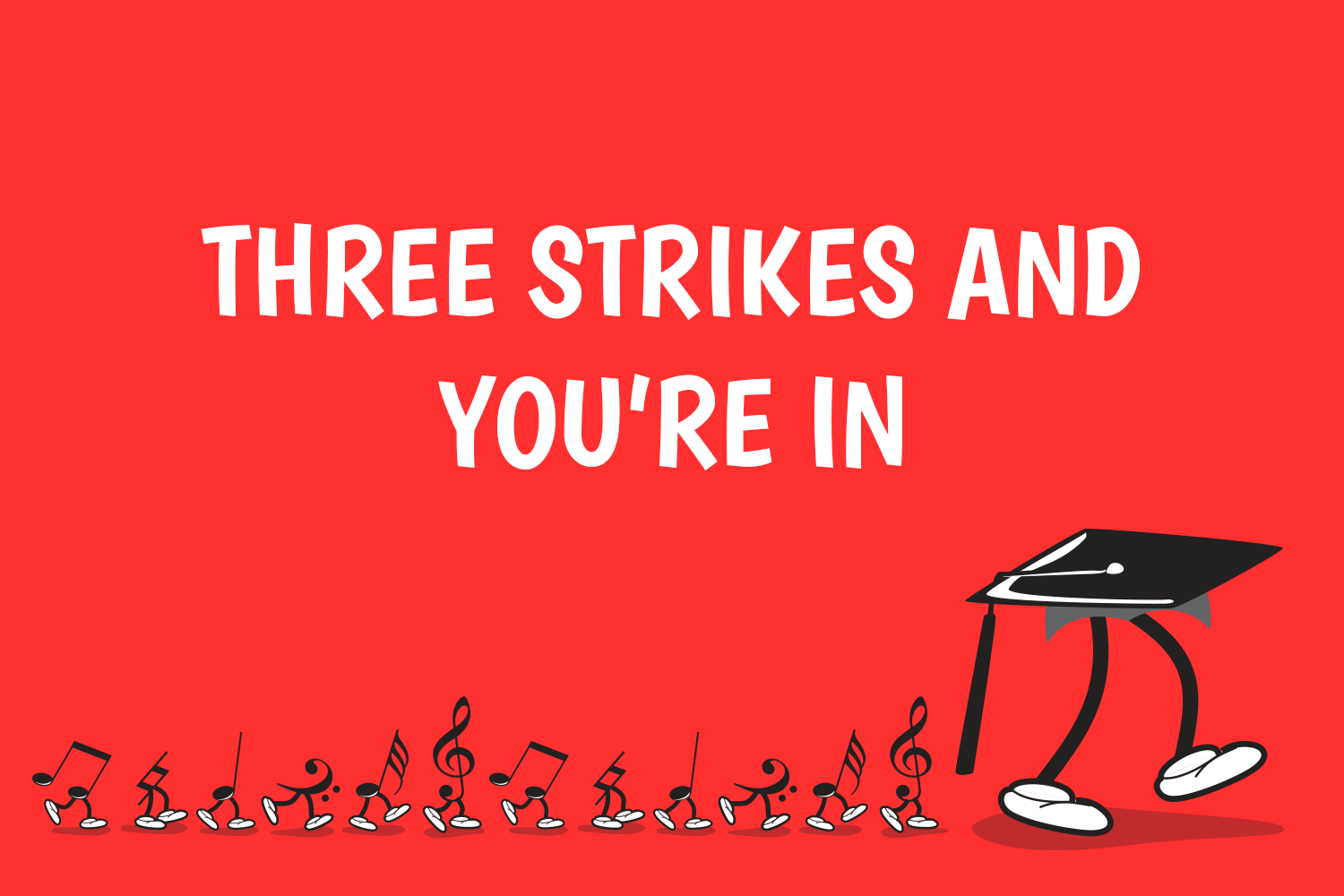Three Strikes and You’re In

This post originally appeared on our PreachWhatYouPractice site.
Original Published Date: 24 February 2014
In the past 3 months, I have done three separate one-hour piano recitals. I have not done this much performing since my school and university days. But it has been the most rewarding performing of my life.
These were recitals for the residents of aged care facilities. The average age of the audience was 87 and one could not wish for a more appreciative audience. Everyone was happy and excited to be there. This is very different from the performances of my youth, as there were no adjudicators, examiners or critics. No-one had paid money to come, therefore no-one was expecting to ‘get their money’s worth’. There was also no-one who had been dragged along (for example, my sister, made to sit through my piano eisteddfods), sitting impatiently until the end.
All of this made for an extremely pleasurable and relaxing atmosphere. I prepared a program full of all the ‘warhorses’ of the classical piano repertoire: Fur Elise, Rondo Alla Turca, Chopin Prelude in E flat… you get the idea. Whilst many of these were under my fingers or were re-hashed from my childhood, some I had to learn especially since my teachers seemed to have steered me clear of them despite their popularity!
As a result, all my friends and family were shocked to discover that I was practising Fur Elise. It’s true, I had never learned it as a child and I usually ban most of my students from playing it. But I have discovered that it gets a bad rap, poor old Fur Elise. When it’s played well (which I must say I managed to do J), and when the tempo remains consistent (rather than completely changing for the B and C sections to accommodate the all-to-eager Section A tempo), and when it’s actually requested by the audience, it is really quite a beautiful piece to include in a recital.
Another piece that I had never played and that my parents assured me would be very well received in this demographic is Rachmaninoff’s Variation no. 18 on a theme by Paganini. Wow, this piece is quite hard. There are so many chords and so many accidentals to decipher. It’s not one to quickly sight-read through! I spent a lot of time on this piece and here is what I found:
Recital no. 1 (November): Leading up to this I practised madly, trying to memorise as many passages as I could, playing the chords in every which way possible. On the day most of it went ok.
Recital no. 2 (December): Less practice for this than for no. 1, mostly just keeping it in the fingers and working on the bits that slipped in recital no. 1. On the day it went MUCH BETTER than the first recital. I was pleased.
Recital no. 3: (February) With only a small amount of revision, I found myself thinking as I was playing it: ‘Wow, this piece is actually quite easy now’.
I have always known, just from my own experience, that pieces improve with performance more quickly than they do with practice only. I have always said to my students ‘there’s just something about playing it under pressure’. But now I’m going to tweak my advice to them; not only does performing a piece make it mature quickly into a better piece, but this also needs to happen more than once. I think that it really did take three performances before the pieces really settled into my fingers and I could enjoy the music, rather than be stressed about notes.
Performing in a venue is not anything like practising at home. The piano is completely different from the one you play on at home, as is the stool. You have adrenalin running through your veins. Your hands are the tiniest bit sweaty and you can’t help wondering if wiping them quickly on your nylon skirt will help or not. The lighting is different. The audience shifts and coughs (and sometimes, in the case of my recent recitals, state loudly in the middle of a very soft section ‘Oh this is a lovely concert’). But most of all, there is that little voice that suddenly switches on in your head, saying ‘you have to get this right’. No matter how relaxed the performing atmosphere is – and boy was this relaxed, I could have played a C major scale and they would have loved it – there is always that pressure one puts on oneself to play well, to try to play flawlessly.
That little voice was my undoing many times when I was younger. But as an adult and as a teacher who constantly touts this, I’ve learned to control it through deliberate practice. As Abe Cytrynowski wrote about in his marvellous blog about practice, if you start to question what is going on during a performance and you’ve never questioned it in practice, you’re pretty much done for. Stumbles, hesitations, memory lapses, the works. The trick is to get that voice to switch on during practice so that when the performance day comes all the questioning and pressuring has already been done. This is a tough ask, and for me, I think that performing these pieces three times enabled me to stamp out the voice and reach a new level of playing.
My mentor and now friend Barbara Macrae used to say to us when she was principal of the Conservatorium High School: ‘If you want to give a magnificent performance, you have to practice giving a magnificent performance.’ I wish I had taken her a little more seriously at the time, but I really do get it now.
I have more recitals planned and I feel privileged to be able to play for these residents. It brings them such joy, and it is invigorating for me. A win-win situation! It’s also incredibly validating to have the advice I’ve been giving my students for so long reconfirmed by my own experience. I can say that I am indeed preaching what I practice!
